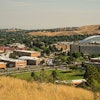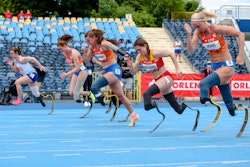NEW YORK — Five days before he was to start college, Fred Maahs’ world turned upside down. Off the Delaware coast in 1980, on the last day of summer vacation, the 18-year-old took a dive from his family’s boat into an unseen sandbar barely a foot below the surface, sustaining injuries that paralyzed him from the chest down.
After months of medical care, he had to find a new college to attend — the one at which he enrolled said its campus was not accessible to wheelchairs. One of his first jobs was on the second floor of a building with no elevator; two friends carried him up and down the stairs.
“For those first couple of years, I was really dependent on family or friends,” said Maahs. “Back then, people with disabilities were primarily kept at home.”
Were that diving accident to happen now, the campus and workplace would be accessible — with ramps, curb cuts, elevators, designated parking spots. A blind or deaf person, or anyone with a host of other disabilities, also would find accommodations enhancing their independence and engagement — all of this the legacy of the sweeping Americans with Disabilities Act, which was signed into law 25 years ago, on July 26, 1990.
“Let the shameful wall of exclusion finally come tumbling down,” declared President George H. W. Bush as he prepared to sign the legislation. Some 2,000 people with disabilities — elated after years of activism – gathered on the South Lawn of the White House for the ceremony.
Remarks of President George Bush at the Signing of the Americans with Disabilities Act, July 26, 1990
Source: www.eeoc.gov




















